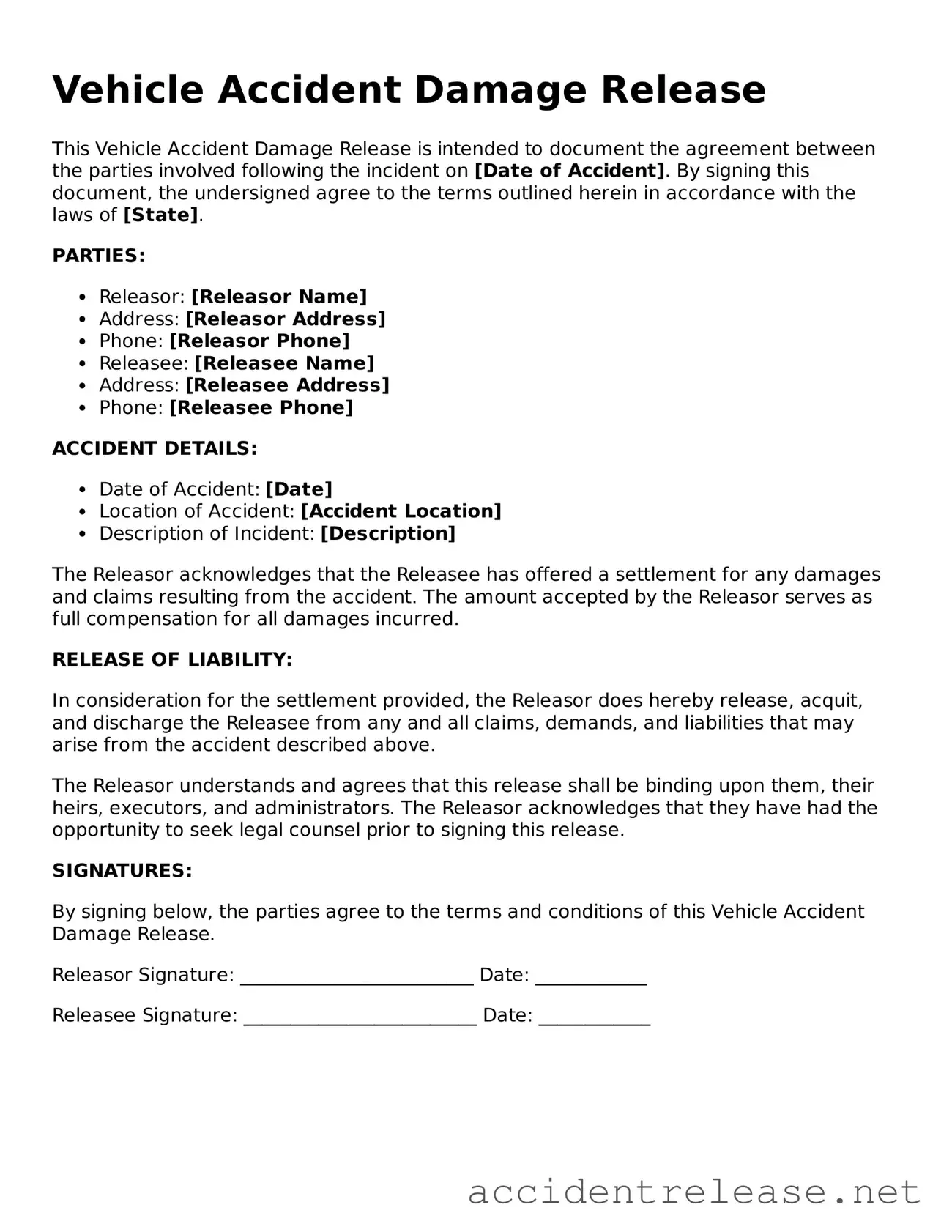What is a Vehicle Accident Damage Release form?
The Vehicle Accident Damage Release form is a legal document that allows one party to release another from liability for damages resulting from a vehicle accident. By signing this form, the injured party agrees not to pursue any further claims related to the accident, often in exchange for compensation or a settlement.
Who should use this form?
This form is typically used by individuals involved in a vehicle accident who have reached an agreement on damages. It is beneficial for those who want to ensure that all claims related to the incident are resolved. Both parties—the one receiving compensation and the one providing it—should consider using this form to avoid future disputes.
What information is required on the form?
The form generally requires basic information about the parties involved, including names, contact details, and vehicle information. Additionally, it should outline the specifics of the accident, the damages incurred, and the agreed-upon compensation. Clear documentation helps prevent misunderstandings later on.
Is it necessary to have the form notarized?
While notarization is not always required, having the form notarized can add an extra layer of authenticity. A notary public verifies the identities of the signers and ensures that they are signing voluntarily. This can be particularly useful if disputes arise in the future.
What happens if I do not sign the form?
If you choose not to sign the Vehicle Accident Damage Release form, you retain the right to pursue further claims for damages. However, this may also mean that negotiations for a settlement could stall. Without the form, both parties remain open to additional legal action, which can prolong the resolution process.
Can I still pursue additional claims after signing the form?
Generally, signing the form indicates that you are waiving your right to pursue further claims related to the accident. It is essential to fully understand the implications before signing. If you have concerns about future medical expenses or damages, it may be wise to consult with a legal professional before proceeding.
What should I do if I feel pressured to sign the form?
If you feel any pressure to sign the form, take a step back. It is crucial to review the document carefully and ensure you understand its contents. Consider seeking legal advice to evaluate your options and ensure that your rights are protected. Signing under duress could lead to complications later.
How does this form affect my insurance claim?
Signing the Vehicle Accident Damage Release form may impact your insurance claim. If you accept a settlement, it could limit your ability to seek further compensation from your insurance company. Always check with your insurance provider before signing to understand how it may affect your coverage and claims.
Where can I obtain a Vehicle Accident Damage Release form?
You can typically find a Vehicle Accident Damage Release form online through legal websites, insurance companies, or local government resources. It is advisable to use a reputable source to ensure that the form meets your state’s legal requirements. Additionally, consider consulting a legal professional to ensure you are using the correct version for your situation.
